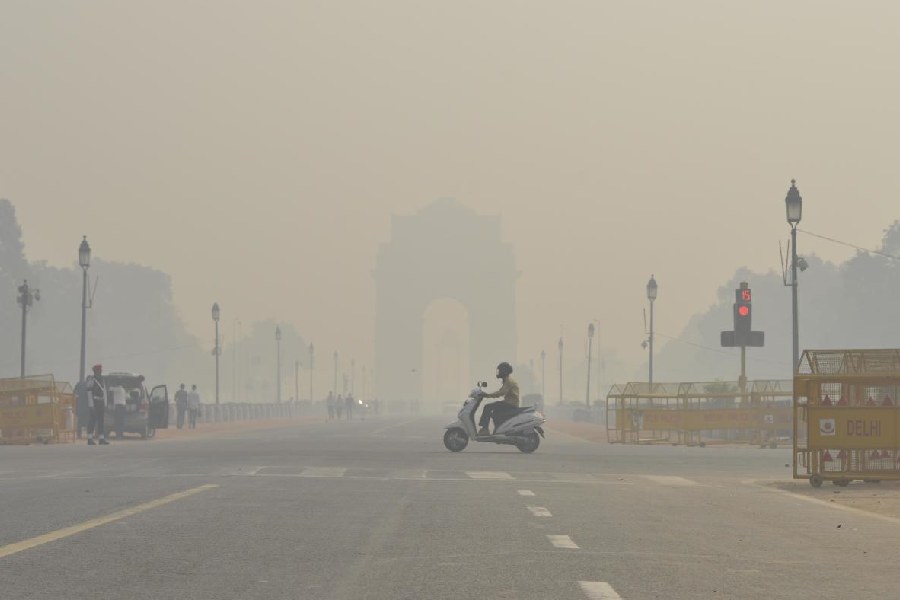Book: THE LIGHT AT THE END OF THE WORLD
Author: Siddhartha Deb
Published by: Westland
Price: ₹799
Previews of Siddhartha Deb’s third novel have compared the work to magic-realist classics by Salman Rushdie and Gabriel García Márquez. I think the comparison with magic realism is misleading. Like Numair Atif Choudhury’s underrated classic, Babu Bangladesh!, Deb’s novel tends more towards the genre of the weird. This post-Lovecraftian genre, which merges horror, science fiction and fantasy, explores strange, non-Euclidean architectures, multiple, opaque realities that exist concurrently with the everyday, and represents occult atmospheres and settings. Consider, for instance, Choudhury’s depiction of the “occult” dimensions of the Jatiya Sangsad Bhaban in the first partof Babu Bangladesh! alongside Deb’s representation of the hallucinatory ambience of the American chemical factory in the Kali Parade grounds in Bhopal, 1984, in the second part of his book (titled “Claustropolis: 1984”). Similarly, we can compare Choudhury’s depictions of climate change in Bangladesh’s future with Deb’s evocation of the smog that suffuses the dystopian portrayal of Delhi in the first part of The Light at the End of the World titled, significantly, “The City of Brume”.
The two novels differ, though, in their narrative structure. Babu Bangladesh! plots a relatively linear “weird” history of Bangladesh from around 1971 to the near future, focusing on the “biography” of the enigmatic figure of the eponymous Babu. Deb’s book has a non-linear structure, with the first and last part set in a dystopian near-future featuring the former journalist, Bibi, who searches for her missing Manipuri ex-colleague, Sanjit — a search that takes her from Delhi to the Andamans. The three sections between these two parts take us back to 1984 (Bhopal), 1947 (Partition-era Calcutta), and 1859. While there are no direct causal connections between the characters or plotlines in the past and the near-future, repetitions abound — the Vimana brand matches in “Claustropolis” resonating with the rumored construction of the Vimana (inspired by the “Vyamaanika Shastra”) in the Calcutta section (titled “Paranoir: 1947”) is an example. In classic weird fashion, the logic behind these repetitions is not explained.
There are different ways in which the weird operates here. The first is the evocation of a weird atmosphere: “Behind, there are footsteps again... Bibi hurries, alert as she turns into blind corners, listening for those footsteps that sound effortless as they keep up with her. Blood pulses through her body... The foggy colonnades of the Inner Circle, swivel around her...” What is weird about this passage is not only the bodily and spatial disorientation that Bibi experiences but also the fact that Deb never explains who is following her. This narrative opacity that eschews explanation and depictions of cause-and-effect relations has political implications. If magic-realism plots alternative histories of nationhood from occluded perspectives, the weird hints at multiple possibilities without revealing what they are. The weird has, in Carl Freedman’s sense, an “inflationary” tendency as it shows reality to be more complex and labyrinthine than what is decipherable by common sense. Such complexity could also herald alternative possibilities, much like the “secret center of the world” supposedly discovered by Das, the protagonist of “Paranoir.” As he ruminates, this centre could be a place where “alternative version[s] of official, officious history… [exist] in direct opposition to…” monumental narratives. These could be imaginative antidotes to the impoverished and uniform realities dictated by our authoritarian presents. Secondly, there is a sense in which living in the epoch of the Anthropocene is weird; in other words, quite literally, the atmosphere is weird. Consider here the smoky fog in Delhi that permeates the novel’s first part — a phenomenon that is a combination of both natural and anthropogenic factors. The sun “hovers behind a filter of pollution, a whitish, phlegmy disk…” Yet, people live and die in such alien realities, showing us that Anthropocene narratives, like this one, are depictions of increasing weirdness in the worlds we inhabit and think we know very well.











